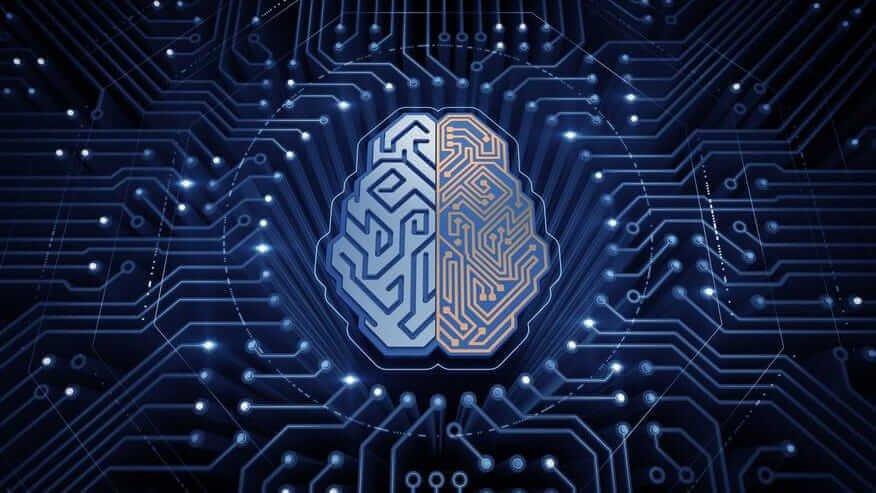AI, Cloud and Security, the drivers of innovation for customer service

- New Artificial Intelligence tools will help agents improve customer service
- Digital channels and voice channels. That discrimination is no longer real. Now there is only one and it is the Voice of the Customer
New technologies such as AI or the metaverse have a place in customer service, but not to replace contact center employees as such, but to support both them and the customers themselves. This has been one of the many conclusions drawn from the IA meeting and comprehensive cloud solutions, protagonists in the customer experience , organized by elEconomista.es , Nuance and Microsoft.
During the table-debate, held at the InterContinental Hotel in Madrid and also broadcast via streaming ; The speakers, all experts in the field, have agreed on something that they consider essential for the optimal competitiveness of Spanish companies in the international context, led by Marco Piña , commercial director of Nuance solutions for Southern Europe at Microsoft; Diego Arteaga , director of business application specialists at Microsoft Spain; Rubén Andrés , Chief Information Officer of EVO Banco; Agustín Cárdenas , Director of Business Transformation of Telefónica Companies; Sandra Gibert , CEO of Intelcia andJosé Francisco Rodríguez , president of the AEERC.
In relation to the current panorama of technology around interactions with customers, the subject with which the gathering began, Diego Arteaga stated: “The technology we have today is much better and more accessible for companies of all sizes and industries. It has a more immediate return, a capacity for continuous improvement, and easy training. We are talking about a technology that allows more natural, intelligent, sophisticated, and decisive conversations to be held on all channels.”
Agustín Cárdenas still went further saying that the customer service-technology pairing has been linked since the beginning of contact centers , being completely respected by the user if it is done well: “The user needs to solve a problem and if at that moment we put an intelligible menu, the acceptance is not going to be so positive”, and he put himself in the place of the current client: “I want the company to know who I am, my relationship with it and if there have been previous interactions. In short, that they know me It is necessary to try that the solution of the problem is carried out in the first consultation and in the shortest possible time, whatever the channel from which the client contacts, and if not, that the agent assumes responsibility and does a personalized follow-up of the user”.
For her part, Sandra Gibert is very clear that the client is the first to embrace technological integrations: “We take complex interactions to people so that they have engagement , but there are other simpler ones with virtual assistants that even the client likes. to go to an intermodal system with text or images”, and gives as an example two success stories of innovative developments from his company: “We have created a platform for dealers, where images and their addresses are sent, and another for medical appointments that Avoid the long waiting lines.
Ruben Andres; chief information officer of EVO Banco; In his turn to speak, he wanted to share with the attendees a specific example of how biometrics, a technology incorporated into his EVO VoiceID service to verify the identity of customers and reinforce the security of authentication processes through his mobile application: “Implemented since the pandemic, the solution allows the customer’s voice to serve directly as a password. We have started with the immediate transfer service and we have managed to reduce cases of fraud without affecting the user experience at any time. Since its implementation, there has not been any case of fraud, and thousands of operations are also carried out every month”.
To finish with this question, Marco Piña addressed how companies already know how to approach technological implementations in their call centers : “As a technology provider, Nuance asks about the objectives. It is a project with technology, but you have to understand what it is what they want to solve. Otherwise, frustrations come in the companies and in the end it seems that technology is to blame”.
technology trends
Technological trends in 2023 was the other major topic that was addressed during this first table-debate on AI and comprehensive cloud solutions , protagonists in the customer experience, and in this each speaker contributed their own vision.
Sandra Gibert explained that there will be three : “Self-management or increased self-service, the real use of natural language processing for both text and voice, and the use of AI and prediction algorithms, to know what is going to happen and be proactive in following interactions.
Regarding the future, Marco Piña explained that for him the trend and the challenge of the coming years is to move to a 100% cloud architecture , that is, remote servers that can be accessed from anywhere thanks to the Internet, through the optimization of costs that it supposes and by the protocols of security and confidence for the client that it offers at all times.
This same line is also shared by Agustín Cárdenas, who leads technological and digital transformation projects for Telefónica: “We are in years of consolidation, technologies that are already mature, such as CRM , and we must take it to the cloud. We must help to understand companies which are the projects that are going to help them by providing numbers, give them the exact ROI “.
Cárdenas also did not want to forget a very important sector of the population, our elders , in this short-term future forecast. And he gives as an example several projects that they carried out where personalized treatment came to the fore: “During the pandemic there was a group of elderly people who should not be forgotten, so we wanted to make processes smooth and pleasant for them “Having more information about them allowed us to lead more advanced processes. For us it is trying to make the customer feel better served.”
And this is something in which most experts such as Marco Piña agreed, who explained it clearly: “Not even with the consolidation of Artificial Intelligence can personalization be forgotten, because then we would forget about the elderly. Technology serves to help agents, not to replace them.
Everyone agrees that investments in cloud and low code solutions , to gain agility, optimize costs and reduce marketing times and environmental impact together with the LLM ( Large Language Models ) revolution that will allow a qualitative leap to be made in existing conversational AI solutions will be a clear trend throughout 2023.”
Delving into the latter, it is inevitable to talk about the popular and revolutionary ChatGPT. Thus, all the speakers offered their point of view on this technology and its feasibility in customer service to improve the relationship between companies and customers.
Diego Artiaga expressed it without a doubt: “It is going to transform the way in which we are going to understand the world, the contact centers are also going to be affected. We are very excited about what it is going to bring us”, but for example Agustín Cárdenas only imagined it as technological support, rather than as a new channel.
For his part, Rubén Andrés wanted to set an example of all the benefits that EVO Banco brings, since since 2018 the entity has integrated AI developments into its customer service management systems. Its chief information officer explains that only 25% of callsof customers end up with a human agent, so it is also clear to him: “There is no turning back, the digitization of companies is the differential factor to improve the customer experience. Now it is a challenge because the customer directly asks, not there are menus. EVO wants to put sensors that anticipate the solution to the customer, the experience is that there is no customer experience. They will be sensors like those used by Formula 1 in their vehicles to measure the temperature or failures inside, “he ended by saying metaphorically .
For his part, Agustín Cárdenas compared the possible arrival of Artificial Intelligence with the trends of four years ago, when there was talk of fiber, the cloud and that, in general terms, everything had to be interconnected . “We have all taken our first steps with AI. It is a tool that seems like magic to me… It is made up of algorithms. We are in the economy of algorithms, which are going to be monitored. It is exciting, but it represents a huge challenge.”
José Francisco Rodríguez , during his turn to speak, contributed to the topic what he believes AI will be: a conversational bonus. In contexts of simple conversations, the president of the AEERC is clear that we are going to see it implemented, since he is even aware that there are professionals in Spain who are already working on this type of technological development.
One of the embodiments of AI that has already been implemented in many customer interaction channels is ChatGPT , a chat system based on the GPT-3 Artificial Intelligence language model, developed by the OpenAI company . It is a model with more than 175 million parameters, trained with large amounts of text to perform language-related tasks, from translation to text generation.
Regarding its practical application, Sandra Gibert gave a clear example of the profitability that it offers: “The minutes of the meetings that our commercial department maintains periodically are made by this technological development, and not only that, since it also sends said communication by internal mail to all attendees. All completely automatically.”
Finally, the table-debate could not ignore the controversial bill on Customer Service Services that the Government plans to carry out in the coming months and which, among other novelties, could limit the automation of customer service to the client. José Francisco Rodríguez, president of AEERC, the most critical speaker of the customer service law that is being processed in Congress due to the position he occupies in the association, is concerned about the economic impact that this would have if it entered into force and requires greater clarity and the involvement of experts and companies from the Spanish business fabric, to propose solutions and alternatives that promote investments in technological innovation and job creation in equal parts.
In addition, remember the great acceleration that the pandemic has caused in terms of digitization, the change in the level of investment prioritization in companies and the adoption of technology at the user level at all levels. José Francisco invites companies to build an education model based on constant innovation and training and take advantage of all that we have advanced during these post-pandemic years to continue evolving customer relationship models to continue setting trends and an example in the industry from the contact center .
Sandra Gibert supported this same point of view, delving into the fact that it is a legislation that has no replica in Europe, that it goes against automation and that it is against the free market because it does not allow a service of differential value to be provided. “It’s anachronistic.”






